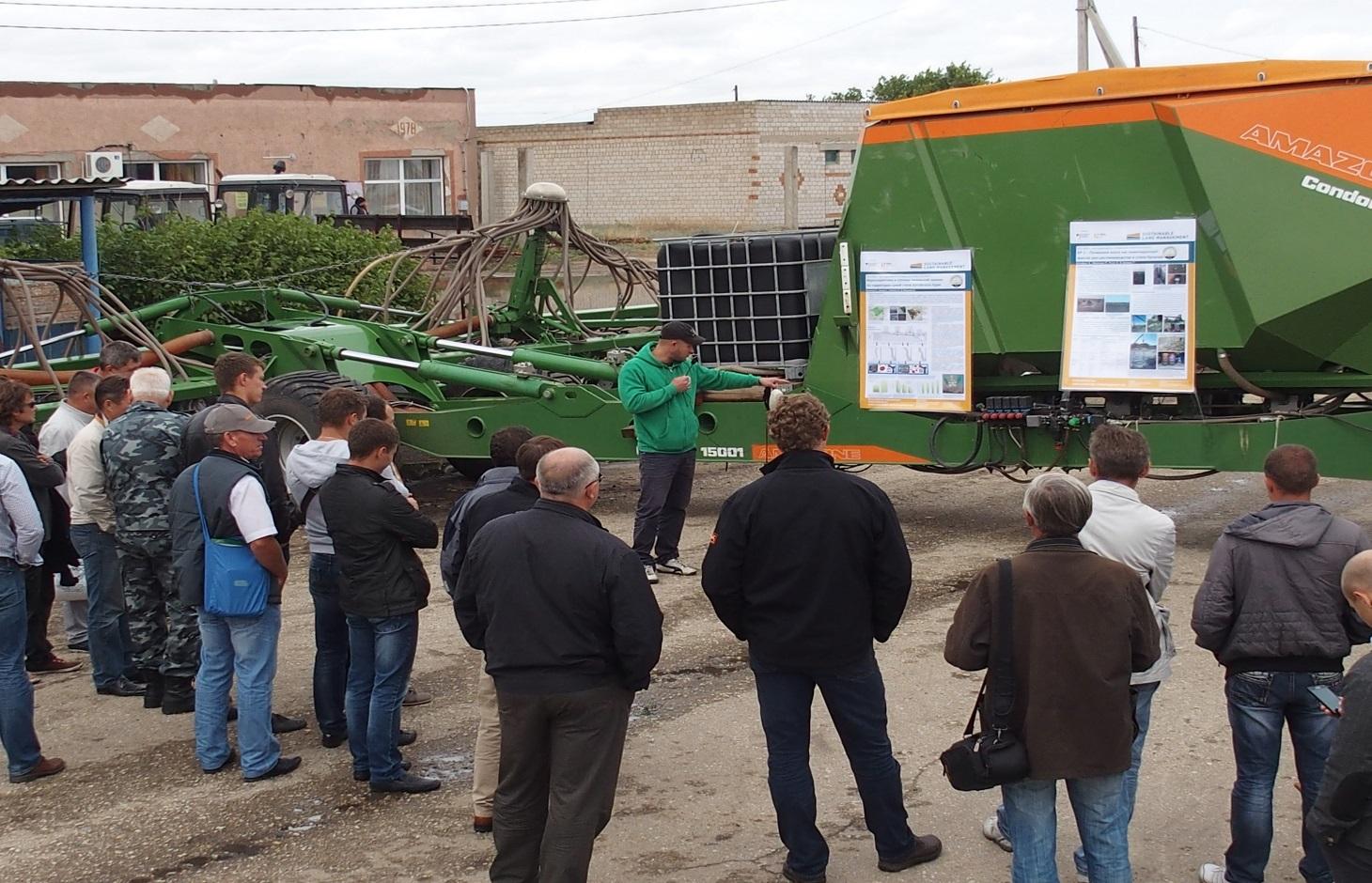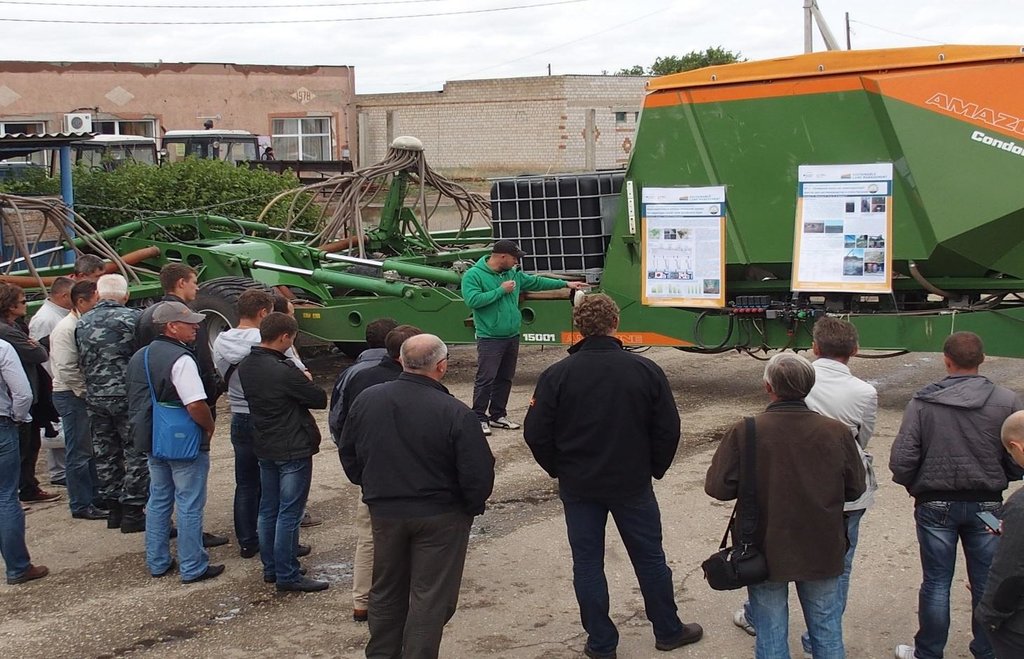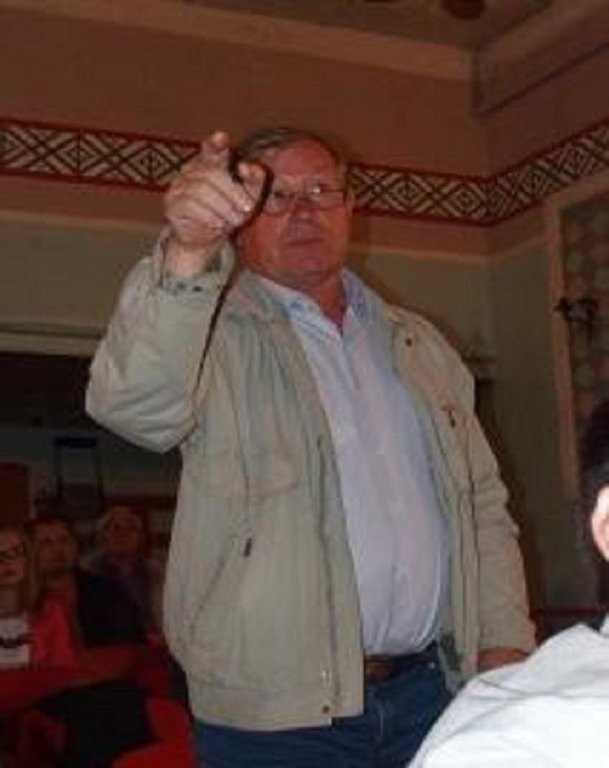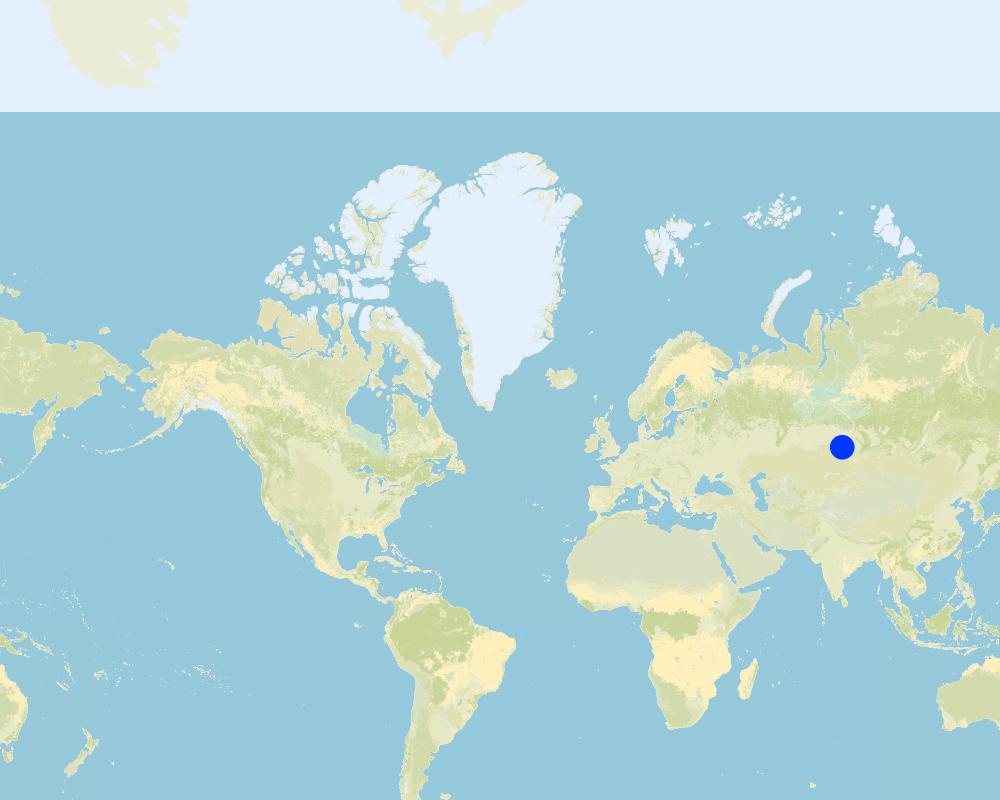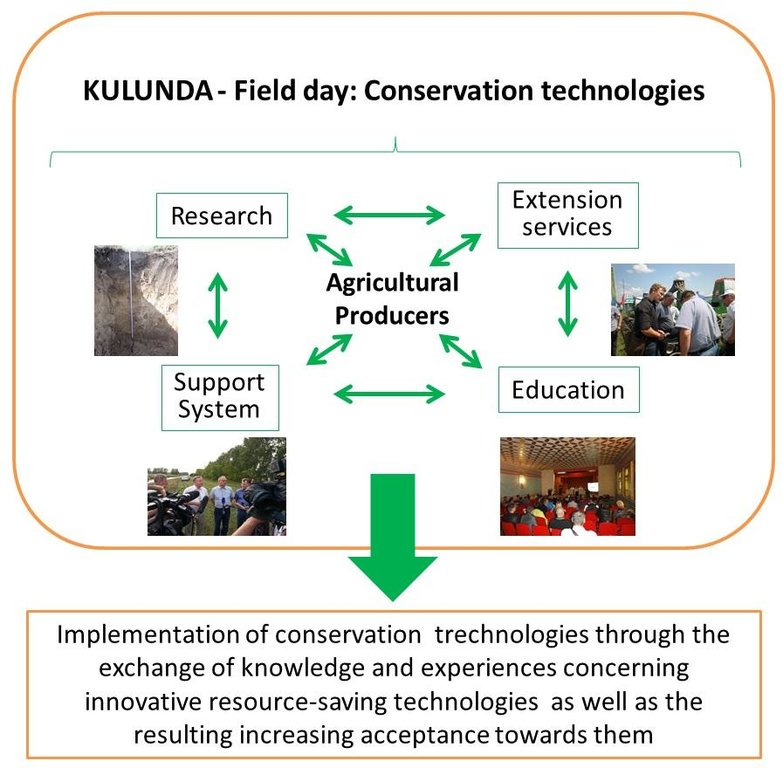Field days [ប្រទេសរុស្ស៊ី]
- ការបង្កើត៖
- បច្ចុប្បន្នភាព
- អ្នកចងក្រង៖ Peter Liebelt
- អ្នកកែសម្រួល៖ –
- អ្នកត្រួតពិនិត្យច្រើនទៀត៖ David Streiff, Deborah Niggli
Полевой семинар
approaches_2617 - ប្រទេសរុស្ស៊ី
ពិនិត្យមើលគ្រប់ផ្នែក
ពង្រីកមើលទាំងអស់ បង្រួមទាំងអស់1. ព័ត៌មានទូទៅ
1.2 ព័ត៌មានលម្អិតពីបុគ្គលសំខាន់ៗ និងស្ថាប័នដែលចូលរួមក្នុងការវាយតម្លៃ និងចងក្រងឯកសារនៃវិធីសាស្ត្រផ្សព្វផ្សាយ
អ្នកជំនាញឯកទេស SLM:
Jelinek Ladislav
Martin Luther University Halle-Wittenberg
អ្នកជំនាញឯកទេស SLM:
Kasarjyan Milada
Martin Luther University Halle-Wittenberg
អ្នកជំនាញឯកទេស SLM:
Wust Andreas
Martin Luther University Halle-Wittenberg
អ្នកជំនាញឯកទេស SLM:
Bavorova Miroslava
Martin Luther University Halle-Wittenberg
អ្នកជំនាញឯកទេស SLM:
Herzfeld Thomas
Martin Luther University Halle-Wittenberg
អ្នកជំនាញឯកទេស SLM:
Imamverdiyev Nizami
Martin Luther University Halle-Wittenberg
អ្នកជំនាញឯកទេស SLM:
Hiller Karsten
Martin Luther University Halle-Wittenberg
អ្នកជំនាញឯកទេស SLM:
Kley Dorothee
Martin Luther University Halle-Wittenberg
អ្នកជំនាញឯកទេស SLM:
Illiger Patrick
Martin Luther University Halle-Wittenberg
អ្នកជំនាញឯកទេស SLM:
Frühauf Manfred
Martin Luther University Halle-Wittenberg
ឈ្មោះគម្រោងដែលបានចងក្រងឯកសារ/ វាយតម្លៃលើវិធីសាស្ត្រផ្សព្វផ្សាយ (បើទាក់ទង)
Sustainable land management in the Russian steppes (KULUNDA / GLUES)ឈ្មោះគម្រោងដែលបានចងក្រងឯកសារ/ វាយតម្លៃលើវិធីសាស្ត្រផ្សព្វផ្សាយ (បើទាក់ទង)
Book project: Making sense of research for sustainable land management (GLUES)ឈ្មោះអង្គភាពមួយ (ច្រើន) ដែលបានចងក្រងឯកសារ/ វាយតម្លៃលើវិធីសាស្ត្រផ្សព្វផ្សាយ (បើទាក់ទង)
Martin-Luther-University Halle-Wittenberg (Martin-Luther-University Halle-Wittenberg) - ប្រទេសអាល្លឺម៉ង់1.3 លក្ខខណ្ឌទាក់ទងទៅនឹងការប្រើប្រាស់ទិន្នន័យដែលបានចងក្រងតាមរយៈវ៉ូខេត
តើពេលណាដែលទិន្នន័យបានចងក្រង (នៅទីវាល)?
19/07/2016
អ្នកចងក្រង និង(បុគ្គលសំខាន់ៗ)យល់ព្រមទទួលយកនូវលក្ខខណ្ឌនានាទាក់ទងទៅនឹងការប្រើប្រាស់ទិន្នន័យដែលបានចងក្រងតាមរយៈ វ៉ូខេត:
បាទ/ចា៎
1.4 ការយោងមួយ (ច្រើន) ទៅលើ (កម្រង) បញ្ជីសំណួរនៃបច្ចេកទេស SLM
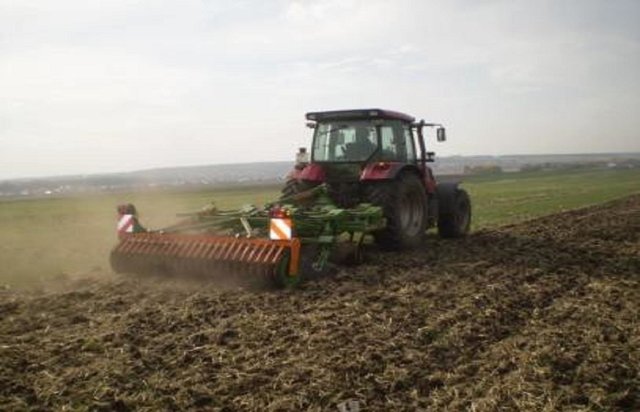
Minimum Tillage [ប្រទេសរុស្ស៊ី]
Minimum tillage is a one-pass operation combined with sowing, using a classic Russian seeder modified for seedbed preparation and soil mixing. It can include shallow stubble cultivation after harvesting.
- អ្នកចងក្រង៖ Peter Liebelt
2. ការពណ៌នាអំពីវិធីសាស្ត្រផ្សព្វផ្សាយ SLM
2.1 ពណ៌នាសង្ខេបខ្លីពីវិធីសាស្ត្រផ្សព្វផ្សាយ
Field days are events for regional stakeholders, mainly farmers in the study area, to discuss their demands regarding scientific help, and to be informed about the activities and results of new methods and technologies for conservation agriculture.
2.2 ពណ៌នាលម្អិតពិវិធីសាស្ត្រផ្សព្វផ្សាយ
ពណ៌នាលម្អិតពិវិធីសាស្ត្រផ្សព្វផ្សាយ:
Aims / objectives: The approach aimed at raising awareness, encouraging exchange and communication for new sustainable land management (SLM) technologies including no-till and minimum till. The main goal - implementation of improved SLM technologies – was intended to be achieved through capacity building and strengthening of the acceptance of new technologies Field days, organized at a partner farm/ study site in Poluyamki (Mikhailovski Rayon), were a suitable framework for the achievement of this goal. Another objective of the field day is cooperation and networking between farmers, scientists, representatives of the regional politics and administration, and commercial companies. This stimulates the exchange of knowledge and the dissemination of new information about SLM - which is very important for the successful implementation and evolution of the technology.
Methods: For effective presentation of the minimum and no-till cropping systems to the public, and to give everyone present at the field day the opportunity to inform themselves about conservation measures, an information point was set up by the project. For spread of information about research activities, results and recommendations, posters were presented - and leaflets and brochures were handed out. In this way it was possible to promote knowledge transfer from the scientists to the farmers, and to receive feedback.
Stages of implementation: Furthermore, interdisciplinary and transdisciplinary knowledge exchange and discussion was initiated about the results and recommendations, which were based on the presentations given in the community centre. Due to the participation of many important local stakeholder groups, the field day was a suitable platform to contribute to network-building. Also, among the participants were private companies working in the agrarian sector. The cooperation partner of the research project, the Amazone company, also made presentations. In the study site the new tillage systems are already working. Furthermore the test farm unit in Poluyamki has also started to implement no-till and minimum tillage systems on fields outside the test farm, on farmer’s fields that do not belong to the project’s research sites and are not under the control of the project staff.
Role of stakeholders: Farmers are the stakeholders of primary importance, since it is hoped they will take up and implement the conservation technologies. Therefore most participants during the field day were farmers. Those invited are interested in new technologies and have the necessary financial power to invest in new technologies. The chances of successful implementation in their farms are very good. Most of these farms already have experience in conservation technologies. In the investigation area, about 20-30% of land is already cropped/ cultivated under some form of conservation soil tillage.
2.3 រូបភាពនៃវិធីសាស្ត្រផ្សព្វផ្សាយ
2.5 ប្រទេស/តំបន់/ទីតាំងកន្លែង ដែលវិធីសាស្ត្រផ្សព្វផ្សាយត្រូវបានអនុវត្តន៍
ប្រទេស:
ប្រទេសរុស្ស៊ី
តំបន់/រដ្ឋ/ខេត្ត:
Altai Krai
បញ្ជាក់បន្ថែមពីលក្ខណៈនៃទីតាំង:
Mikhaylovski district / rayon
មតិយោបល់:
Area of the test field: 0.13 km2
Total farmland, where the field day was organized: 250 km2
Whole investigation area, where the participants of the field day came from 80 000 km2
Map
×2.6 កាលបរិច្ឆេទនៃការចាប់ផ្តើម និងបញ្ចប់នៃវិធីសាស្រ្តផ្សព្វផ្សាយនេះ
សូមបញ្ជាក់ឆ្នាំដែលបានបង្កើតឡើង:
2013
ឆ្នាំបញ្ចប់ (ប្រសិនបើវិធីសាស្ត្រផ្សព្វផ្សាយត្រូវបានឈប់ប្រើប្រាស់):
2016
2.7 ប្រភេទនៃវិធីសាស្ត្រផ្សព្វផ្សាយ
- ផ្អែកលើគម្រោង/កម្មវិធី
2.8 គោលបំណង/ទិសដៅសំខាន់នៃវិធីសាស្ត្រផ្សព្វផ្សាយ
The Approach focused mainly on SLM with other activities (Awareness raising for the importance of environmental as well as economic sustainability)
Improvement of technology adoption through: Awareness raising, knowledge exchange and transfer, capacity building
The SLM Approach addressed the following problems: - Low agricultural production of conventional/ traditional farming systems
- Limited economic efficiency of conventional/ traditional cropping systems
- Lack of soil water and decrease of soil fertility under conventional/ traditional farming systems
- lack of technical knowledge to implement modern adapted technologies for cropping and cope with more extreme events such as drought
2.9 លក្ខខណ្ឌអនុញ្ញាត ឬរារាំងការអនុវត្តន៍បច្ចេកទេសដែលស្ថិតនៅក្រោមវិធីសាស្រ្តផ្សព្វផ្សាយ
សង្គម/វប្បធម៌/ និងតម្លៃនៃសាសនា
- រារាំង
Historically-caused low levels of trust among land users and other local stakeholder groups like education institutions or consulting services, among others, limits the adoption of “good farming practices”.
Treatment through the SLM Approach: The field days and exchange of practice – oriented knowledge increased the confidence of farmers. This constraint can be addressed by specifically targeted policies, e.g. provision of grants or credit for the establishment of producer groups.
ភាពអាចរកបាននៃធនធានហិរញ្ញវត្ថុ និងសេវាកម្ម
- រារាំង
High cost of new minimum and no-till machinery and difficult access to credits. Budget limitations are proportionately greater with smaller farms (highly variable yields reduce farm profitability, limited access to external funds)
Treatment through the SLM Approach: Subsidised interest rates for machinery. In 2015 machinery for no-till tillage was not susidized.
Demonstrate that environmentally friendly innovative farming technologies are profitable and worthwhile to invest in.
បរិបទនៃស្ថាប័ន
- រារាំង
Unfavourable framework conditions and low capacity of the administration to monitor the state of land and to enforce the soil protection law which would oblige land users to adopt conservation measures.
Treatment through the SLM Approach: The approach did not address this factor.
ក្របខណ្ឌច្បាប់ (សិទ្ធិកាន់កាប់ដីធ្លី កម្មសិទ្ធីប្រើប្រាស់ដីនិងទឹក)
- រារាំង
Unclear land use rights. High share of rented land. Missing incentives to stimulate land users to adopt conservation practices. Secure land use rights motivates to more conscious care for the land and stimulates farmers to adopt better practices.
Treatment through the SLM Approach: To make the best of private ownership, land users need to get a better concept of farming as a business. Strengthen the role of the ‘state redistribution of funding’ system (between different branches of the economy).
The existing land ownership, land use rights / water rights moderately hindered the approach implementation There are still some legislative and administrative weaknesses that limit the full execution of the ownership rights (non-defined borders, lacking cadastral registration of some plots, missing owners, etc.). Furthermore, around half of the land utilized in Altai Krai is owned by the state (of that around 2 milion hectares are administered by the Redistribution Fund). Another aspect is the capacity of the state monitoring agency (State Veterinary and Phytosanitary Controls) to control the compliance of the rules provided the land use conditions are stricter.
ចំណេះដឹងស្តីពី SLM និងការទទួលបានការគាំទ្រផ្នែកបច្ចេកទេស
- រារាំង
In Russia conventional / traditional cultivation still prevails. although market for no-till technologies is fully developed and functional. Various machinery companies either have branches or production units in Russia.
Treatment through the SLM Approach: More events where experience and results of min- and no-till can be shared and discussed.
3. ការចូលរួម និងតួនាទីរបស់ភាគីពាក់ព័ន្ធ
3.1 អ្នកពាក់ព័ន្ធដែលបានចូលរួមក្នុងវិធីសាស្ត្រផ្សព្វផ្សាយ និងតួនាទីរបស់ពួកគេ
- អ្នកប្រើប្រាស់ដីក្នុងតំបន់/សហគមន៍
Local farmers of the Altai Krai
- អង្គការសហគមន៍មូលដ្ឋាន
Local farm cooperatives of the Altai Krai
- អ្នកឯកទេសគ្រប់គ្រងដីប្រកបដោយចីរភាព/ទីប្រឹក្សាបច្ចេកទេសកសិកម្ម
Regional advisors and national SLM specialists and international specialist (KULUNDA scientists)
- រដ្ឋាភិបាលថ្នាក់មូលដ្ឋាន
Politicians of the territory level (Altai Krai) and district level Mikhayloski rayon.
- Staff member of the project
German and Russian scientists of the project
3.2 ការចូលរួមរបស់អ្នកប្រើប្រាស់ដីក្នុងតំបន់/ សហគមន៍ក្នុងតំបន់ក្នុងដំណាក់កាលផ្សេងគ្នានៃវិធីសាស្រ្តផ្សព្វផ្សាយ
| ការចូលរួមរបស់អ្នកប្រើប្រាស់ដីក្នុងតំបន់/សហគមន៍ក្នុងតំបន់ | សូមបញ្ជាក់នរណាត្រូវបានចូលរួម ព្រមទាំងពណ៌នាសកម្មភាពទាំងនោះ | |
|---|---|---|
| ការចាប់ផ្តើម/ការលើកទឹកចិត្ត | អន្តរកម្ម | Experimental plots, demonstration plots and field days were held on land users farms |
| ការរៀបចំផែនការ | អន្តរកម្ម | |
| ការអនុវត្តន៍ | អន្តរកម្ម | |
| ការត្រួតពិនិត្យ និងវាយតម្លៃ | អន្តរកម្ម | |
| Research | អសកម្ម |
3.3 គំនូសបំព្រួញ (ប្រសិនបើមាន)
ការពណ៌នា:
The Field Day brings different stakeholder groups together and promotes new technologies and thus the implementation of conservation land use practices. This is through knowledge and exchange on resource-saving technologies.
អ្នកនិពន្ធ:
Peter Liebelt
3.4 ការសម្រេចចិត្តលើការជ្រើសរើសបច្ចេកទេស SLM
សូមបញ្ជាក់តើអ្នកណាជាអ្នកបានសម្រេចចិត្តក្នុងការជ្រើសរើសបច្ចេកទេសដើម្បីយកមកអនុវត្តន៍:
- អ្នកជំនាញឯកទេស SLM បន្ទាប់ពីបានប្រឹក្សាយោបល់ជាមួយអ្នកប្រើប្រាស់ដី
ចូរពន្យល់:
The SLM specialists of the the KULUNDA project mainly make the decisions on the choice of the SLM technology in cooperation with the farmers.
Decisions on the method of implementing the SLM Technology were made by Project staff. At the beginning of the project a large interview campaign with relevant local stakeholders was conducted by the scientists of the KULUNDA-project. Based on the survey results, a decision on the implementation measures were made by the scientific staff on the German and Russian site with consultation with local stakeholder groups .
4. ជំនួយបច្ចេកទេស ការកសាងសមត្ថភាព និងការគ្រប់គ្រងចំណេះដឹង
4.1 ការកសាងសមត្ថភាព/ បណ្តុះបណ្តាល
តើវគ្គបណ្តុះបណ្តាលបានផ្តល់ឱ្យអ្នកប្រើប្រាស់ដី/អ្នកពាក់ព័ន្ធផ្សេងៗទៀតដែរឬទេ?
បាទ/ចា៎
សូមបញ្ជាក់តើអ្នកណាត្រូវបានបណ្តុះបណ្តាល:
- អ្នកប្រើប្រាស់ដី
- បុគ្គលិកចុះទីវាល/អ្នកផ្តល់ប្រឹក្សាយោបល់
ទម្រង់នៃការបណ្តុះបណ្តាល:
- ពីកសិករទីកសិករ
- ទីតាំងបង្ហាញ
- ការប្រជុំជាសាធារណៈ
ប្រធានបទបណ្តុះបណ្តាល:
Competitiveness of agricultural enterprises, ecologically and economically effective farm management through the use of resource-conserving crop production, costs for introducing modern tillage systems, personnel management, monitoring systems
4.2 សេវាផ្តល់ប្រឹក្សាយោបល់
តើអ្នកប្រើប្រាស់ដីបានទទួលនូវសេវាផ្តល់ប្រឹក្សាដែរ ឬទេ?
បាទ/ចា៎
សូមបញ្ជាក់ប្រសិនបើសេវាកម្មប្រឹក្សាយោបល់ត្រូវបានផ្តល់ឱ្យ:
- នៅលើដីរបស់អ្នកប្រើប្រាស់ដី
ពណ៌នា/ពន្យល់:
Name of method used for advisory service: Field days for demonstration and exchange; Key elements: The field seminar was a suitable platform for knowledge exchange on agricultural production in the Kulunda steppe, Capacity building: On-field demonstration as well as poster and presentations of project results and recommendations. Discussions in the field as well as in the lecture room allowed to address individual stakeholder questions and to suggest solutions. ; Training events in the vocational centre as a suitable way for knowledge transfer to farmers and specialists (training for trainers) in agricultural sector and capacity building.
Advisory service is quite adequate to ensure the continuation of land conservation activities; There is already mainly a governmental advisory structure. The consultants are able to make recommendations for soil conserving technologies. However, international expertise and the demand of consultation by the farmers is too low.
4.4 ការត្រួតពិនិត្យ និងវាយតម្លៃ
តើការត្រួតពិនិត្យ និងវាយតម្លៃគឺជាផ្នែកមួយនៃវិធីសាស្ត្រដែរឬទេ?
បាទ/ចា៎
មតិយោបល់:
Bio-physical aspects were regular monitored by project staff, land users through observations; indicators: crop and weed development, field emergence
Bio-physical aspects were regular monitored by project staff through measurements; indicators: physical and chemical soil parameters as well as soil water
Technical aspects were regular monitored by project staff, land users through observations; indicators: observation of the functionality of the soil conserving technologies, placement accuracy
Technical aspects were regular monitored by project staff through measurements; indicators: fuel consumption, yield,
Socio-cultural aspects were ad hoc monitored by project staff through observations; indicators: attitude
Economic / production aspects were regular monitored by project staff through measurements; indicators: input costs (labour seed, fertilizer, pesticide yield, profit margin
No. of land users involved aspects were ad hoc monitored by project staff through observations
Management of Approach aspects were ad hoc monitored by None through observations
There were no changes in the Approach as a result of monitoring and evaluation
4.5 ការស្រាវជ្រាវ
តើការស្រាវជ្រាវ គឺជាផ្នែកមួយនៃវិធីសាស្រ្តដែរឬទេ?
បាទ/ចា៎
បញ្ជាក់ប្រធានបទ:
- សង្គមវិទ្យា
- សេដ្ឋកិច្ច/ទីផ្សារ
- បរិស្ថានវិទ្យា
- បច្ចេកវិទ្យា
5. ថវិកា និងសម្ភារៈឧបត្ថម្ភពីខាងក្រៅ
5.1 ថវិកាប្រចាំឆ្នាំសម្រាប់ផ្សព្វផ្សាយ SLM
ប្រសិនបើចំនួនពិតប្រាកដនៃថវិកាប្រចាំឆ្នាំមិនត្រូវបានដឹងច្បាស់ សូមប្រាប់ពីចន្លោះនៃថវិកានោះ:
- 2,000-10,000
មតិយោបល់ (ឧ. ប្រភពសំខាន់នៃមូលនិធិ/ម្ចាស់ជំនួយចំបង):
Approach costs were met by the following donors: international (German Ministry of Education and Research, BMBF): 50.0%; private sector (AMAZONE Company for land use technology): 50.0%
5.2 ការគាំទ្រផ្នែកហិរញ្ញវត្ថុ / សម្ភារៈដែលបានផ្តល់ទៅឱ្យអ្នកប្រើប្រាស់ដី
តើអ្នកប្រើប្រាស់ដីបានទទួលការគាំទ្រផ្នែកហិរញ្ញវត្ថ/សម្ភារៈសម្រាប់ការអនុវត្តន៍បច្ចេកទេសដែរឬទេ:
បាទ/ចា៎
ប្រសិនបាទ/ច៎ា សូមបញ្ជាក់ប្រភេទ(ច្រើន)នៃការគាំទ្រ លក្ខខណ្ឌ និងអ្នកផ្តល់ឱ្យ(ច្រើន):
by the agricultural company 'AMAZONE'
5.3 សូមបញ្ជាក់ពីធាតុចូលត្រូវបានផ្តល់បដិភាគ (រួមទាំងកម្លាំងពលកម្ម)
- សម្ភារៈ
| សូមបញ្ជាក់ ធាតុចូលណាខ្លះដែលបានផ្តល់បដិភាគ | កម្រិតទំហំប៉ុណ្ណា | សូមបញ្ជាក់ពីការបដិភាគ |
|---|---|---|
| ម៉ាស៊ីន | ផ្តល់ហិរញ្ញវត្ថុមួយផ្នែក | |
| ឧបករណ៍ | ផ្តល់ហិរញ្ញវត្ថុមួយផ្នែក | |
- កសិកម្ម
| សូមបញ្ជាក់ ធាតុចូលណាខ្លះដែលបានផ្តល់បដិភាគ | កម្រិតទំហំប៉ុណ្ណា | សូមបញ្ជាក់ពីការបដិភាគ |
|---|---|---|
| គ្រាប់ពូជ | ផ្តល់ហិរញ្ញវត្ថុមួយផ្នែក | |
| ជី | ផ្តល់ហិរញ្ញវត្ថុមួយផ្នែក | |
ប្រសិនបើកម្លាំងពលកម្មធ្វើដោយអ្នកប្រើប្រាស់ដី តើវាជាធាតុចូលដ៏សំខាន់មួយដែរ ឬទេ:
- ដោយស្ម័គ្រចិត្ត
5.4 ឥណទាន
តើឥណទានដែលបានផ្តល់នៅក្រោមវិធីសាស្ត្រផ្សព្វផ្សាយសម្រាប់សកម្មភាព SLM នេះយ៉ាងដូចម្តេច?
ទេ
6. ការវិភាគរកផលប៉ះពាល់ និងសេចក្តីសន្និដ្ឋាន
6.1 ផលប៉ះពាល់នៃវិធីសាស្ត្រផ្សព្វផ្សាយ
តើវិធីសាស្ត្រផ្សព្វផ្សាយជួយអ្នកប្រើប្រាស់ដីដើម្បីអនុវត្តន៍ និងថែទាំបច្ចេកទេស SLM?
- ទេ
- បាទ/ច៎ា បន្តិចបន្តួច
- បាទ/ច៎ា ជាមធ្យម
- បាទ/ច៎ា បានខ្លាំង
The field day allowed the transfer of project-based results on the subject of conservation agriculture to the local farmers and other regional actors and promotes the implementation of new soil conserving methods and strategies in the research area by the farmers.
តើវិធីសាស្ត្រផ្សព្វផ្សាយនេះផ្តល់សិទ្ធិអំណាចដល់សង្គមនិងសេដ្ឋកិច្ចដែលក្រុមមិនទទួលបានផលប្រយោជន៍?
- ទេ
- បាទ/ច៎ា បន្តិចបន្តួច
- បាទ/ច៎ា ជាមធ្យម
- បាទ/ច៎ា បានខ្លាំង
The implementation of the technology is not primarily aimed at these issues.
តើវិធីសាស្ត្រផ្សព្វផ្សាយបានឱ្យប្រសើរឡើងនូវបញ្ហាកាន់កាប់ដីធ្លី/សិទ្ធិអ្នកប្រើប្រាស់ដែលរារាំងដល់ការអនុវត្ត SLM?
- ទេ
- បាទ/ច៎ា បន្តិចបន្តួច
- បាទ/ច៎ា ជាមធ្យម
- បាទ/ច៎ា បានខ្លាំង
The problem is unlikely to be overcome in the near future.
Did other land users / projects adopt the Approach?
- ទេ
- បាទ/ច៎ា បន្តិចបន្តួច
- បាទ/ច៎ា ជាមធ្យម
- បាទ/ច៎ា បានខ្លាំង
The field days motivated the farmers and land use specialists to implement the conservation technologies. There is no information about the number of farmers who implement as a result of the field days.
Did the Approach lead to improved livelihoods / human well-being?
- ទេ
- បាទ/ច៎ា បន្តិចបន្តួច
- បាទ/ច៎ា ជាមធ្យម
- បាទ/ច៎ា បានខ្លាំង
By implementing the new conservation technologies the sustainability of farming systems in both the ecological and the economic sense increases.
Did the Approach help to alleviate poverty?
- ទេ
- បាទ/ច៎ា បន្តិចបន្តួច
- បាទ/ច៎ា ជាមធ្យម
- បាទ/ច៎ា បានខ្លាំង
The implementation of the minimum till and no till technologies protect the soil as an important living and economic basis.
6.2 ការលើកទឹកចិត្តចម្បងៗរបស់អ្នកប្រើប្រាស់ដីសម្រាប់ការអនុវត្តបច្ចេកទេស SLM
- បង្កើនផលិតកម្ម
To minimize fluctuations in yield and to secure yield through a higher sustainability
- បង្កើនប្រាក់ចំណេញ (សមត្ថភាព) បង្កើនអត្រាចំណេញ
Due to the higher profit margin
- កាត់បន្ថយទំហំការងារ
The reduction of workload is important especialy in terms of the large farm sizes.
- ការចំណាយ/បដិភាគ
- ការផ្សារភ្ជាប់ទៅនឹងចលនា/គម្រោង/ក្រុម/បណ្តាញ
Affiliation with the KULUNDA project
6.3 សកម្មភាពផ្សព្វផ្សាយដែលប្រកបដោយចីរភាព
តើអ្នកប្រើប្រាស់ដីអាចធ្វើឱ្យមានចីរភាពនូវអ្វីដែលត្រូវបានអនុវត្តន៍តាមរយៈវិធីសាស្ត្រផ្សព្វផ្សាយដែរឬទេ(ដោយពុំមានការគាំទ្រពីអ្នកខាងក្រៅ)?
- បាទ/ចា៎
6.4 ភាពខ្លាំង/ គុណសម្បត្តិនៃវិធីសាស្ត្រផ្សព្វផ្សាយ
| ភាពខ្លាំង/ គុណសម្បត្តិ/ ឱកាស ទស្សនៈរបស់អ្នកប្រើប្រាស់ដី |
|---|
| Opportunity for farmers to get information about new agricultural machinery and other products for implementing new conservation farming system (How to sustain/ enhance this strength: More intensive and profound consultation by agricultural companies regarding new conservation technologies.) |
| Exchange of experience in sustainable land use technologies between the farmers (How to sustain/ enhance this strength: More participating farmers and a constant exchange between not only on the field days) |
| Land user, specialists and advisers all get to know about new technical findings and basic research (How to sustain/ enhance this strength: Regular meetings between the stakeholders. Inclusion of knowledgeable and successful farmers will increase the acceptance of the results presented.) |
| ភាពខ្លាំង/ គុណសម្បត្តិ/ ឱកាស ទស្សនៈរបស់បុគ្គលសំខាន់ៗ |
|---|
| Network building - strengthening and extension of the stakeholder platform. This platform includes different stakeholder spheres: extension service, land users, those in education, scientists, other support systems (How to sustain/ enhance this strength: By inviting various stakeholder groups and by creating opportunities for communication between participants.) |
| Participation of land users allows farmer-to-farmer learning (How to sustain/ enhance this strength: Inclusion of different stakeholders for broad knowledge transfer. Large number of visitors helps to disseminate knowledge.) |
6.5 ភាពខ្សោយ/ គុណវិបត្តិនៃវិធីសាស្ត្រ និងរកដំណោះស្រាយ
| ភាពខ្សោយ/ គុណវិបត្តិ/ ហានិភ័យ ទស្សនៈរបស់អ្នកប្រើប្រាស់ដី | តើបច្ចេកទេសទាំងនោះបានដោះស្រាយបញ្ហាដូចម្តេច? |
|---|---|
| Great organizational effort | More external support of field days for farmers. |
| Because of the high number of participants and the time limit field days are not well suited for coaching of individual farmers | Intensification of extension services. Initiation of additional events for advising. |
| ភាពខ្សោយ/ គុណវិបត្តិ/ ហានិភ័យក្នុងទស្សនៈរបស់បុគ្គលសំខាន់ៗ | តើបច្ចេកទេសទាំងនោះបានដោះស្រាយបញ្ហាដូចម្តេច? |
|---|---|
| Reconciliation of basic research and applied research | Intensified cooperation between researchers and practitioners like farmers or agricultural companies |
| Limited duration of the project | By enhancing continuity of measures that are independent of the project. Strategy to initiate and promote the engagement of local partners such as the agricultural university or farmer associations / groups. |
7. ឯកសារយោង និងវេបសាយ
7.1 វិធីសាស្ត្រ/ ប្រភពនៃព័ត៌មាន
- តាមការចុះទីវាល ការស្រាវជ្រាវនៅទីវាល
- ការសម្ភាសន៍ជាមួយអ្នកប្រើប្រាស់ដី
ការតភ្ជាប់ និងម៉ូឌុល
ពង្រីកមើលទាំងអស់ បង្រួមទាំងអស់ការតភ្ជាប់

Minimum Tillage [ប្រទេសរុស្ស៊ី]
Minimum tillage is a one-pass operation combined with sowing, using a classic Russian seeder modified for seedbed preparation and soil mixing. It can include shallow stubble cultivation after harvesting.
- អ្នកចងក្រង៖ Peter Liebelt
ម៉ូឌុល
គ្មានម៉ូឌុល


